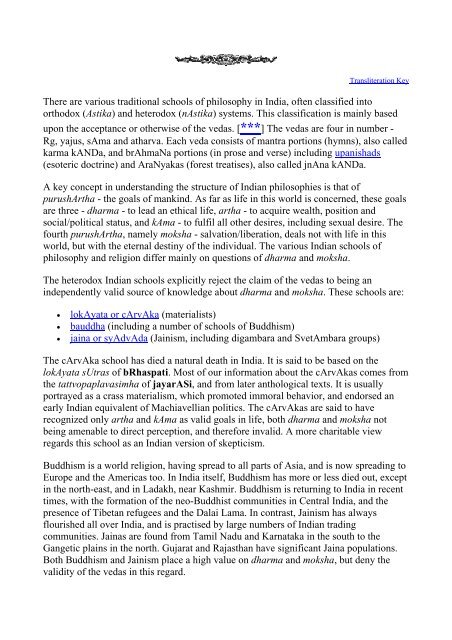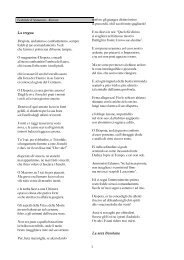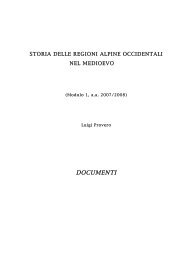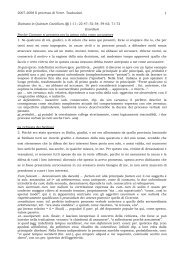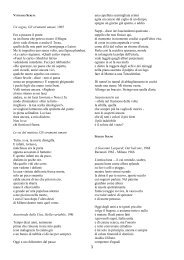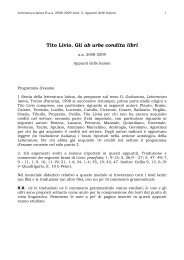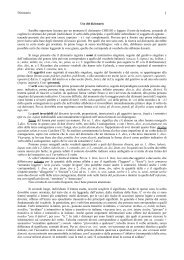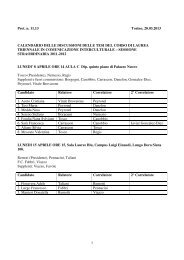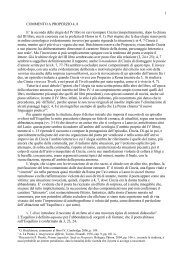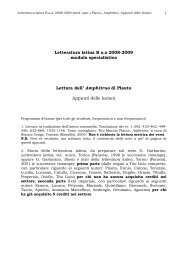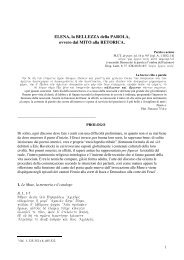ajAti vAda
ajAti vAda
ajAti vAda
Create successful ePaper yourself
Turn your PDF publications into a flip-book with our unique Google optimized e-Paper software.
Transliteration Key<br />
There are various traditional schools of philosophy in India, often classified into<br />
orthodox (Astika) and heterodox (nAstika) systems. This classification is mainly based<br />
upon the acceptance or otherwise of the vedas. [***] The vedas are four in number -<br />
Rg, yajus, sAma and atharva. Each veda consists of mantra portions (hymns), also called<br />
karma kANDa, and brAhmaNa portions (in prose and verse) including upanishads<br />
(esoteric doctrine) and AraNyakas (forest treatises), also called jnAna kANDa.<br />
A key concept in understanding the structure of Indian philosophies is that of<br />
purushArtha - the goals of mankind. As far as life in this world is concerned, these goals<br />
are three - dharma - to lead an ethical life, artha - to acquire wealth, position and<br />
social/political status, and kAma - to fulfil all other desires, including sexual desire. The<br />
fourth purushArtha, namely moksha - salvation/liberation, deals not with life in this<br />
world, but with the eternal destiny of the individual. The various Indian schools of<br />
philosophy and religion differ mainly on questions of dharma and moksha.<br />
The heterodox Indian schools explicitly reject the claim of the vedas to being an<br />
independently valid source of knowledge about dharma and moksha. These schools are:<br />
• lokAyata or cArvAka (materialists)<br />
• bauddha (including a number of schools of Buddhism)<br />
• jaina or syAd<strong>vAda</strong> (Jainism, including digambara and SvetAmbara groups)<br />
The cArvAka school has died a natural death in India. It is said to be based on the<br />
lokAyata sUtras of bRhaspati. Most of our information about the cArvAkas comes from<br />
the tattvopaplavasimha of jayarASi, and from later anthological texts. It is usually<br />
portrayed as a crass materialism, which promoted immoral behavior, and endorsed an<br />
early Indian equivalent of Machiavellian politics. The cArvAkas are said to have<br />
recognized only artha and kAma as valid goals in life, both dharma and moksha not<br />
being amenable to direct perception, and therefore invalid. A more charitable view<br />
regards this school as an Indian version of skepticism.<br />
Buddhism is a world religion, having spread to all parts of Asia, and is now spreading to<br />
Europe and the Americas too. In India itself, Buddhism has more or less died out, except<br />
in the north-east, and in Ladakh, near Kashmir. Buddhism is returning to India in recent<br />
times, with the formation of the neo-Buddhist communities in Central India, and the<br />
presence of Tibetan refugees and the Dalai Lama. In contrast, Jainism has always<br />
flourished all over India, and is practised by large numbers of Indian trading<br />
communities. Jainas are found from Tamil Nadu and Karnataka in the south to the<br />
Gangetic plains in the north. Gujarat and Rajasthan have significant Jaina populations.<br />
Both Buddhism and Jainism place a high value on dharma and moksha, but deny the<br />
validity of the vedas in this regard.


